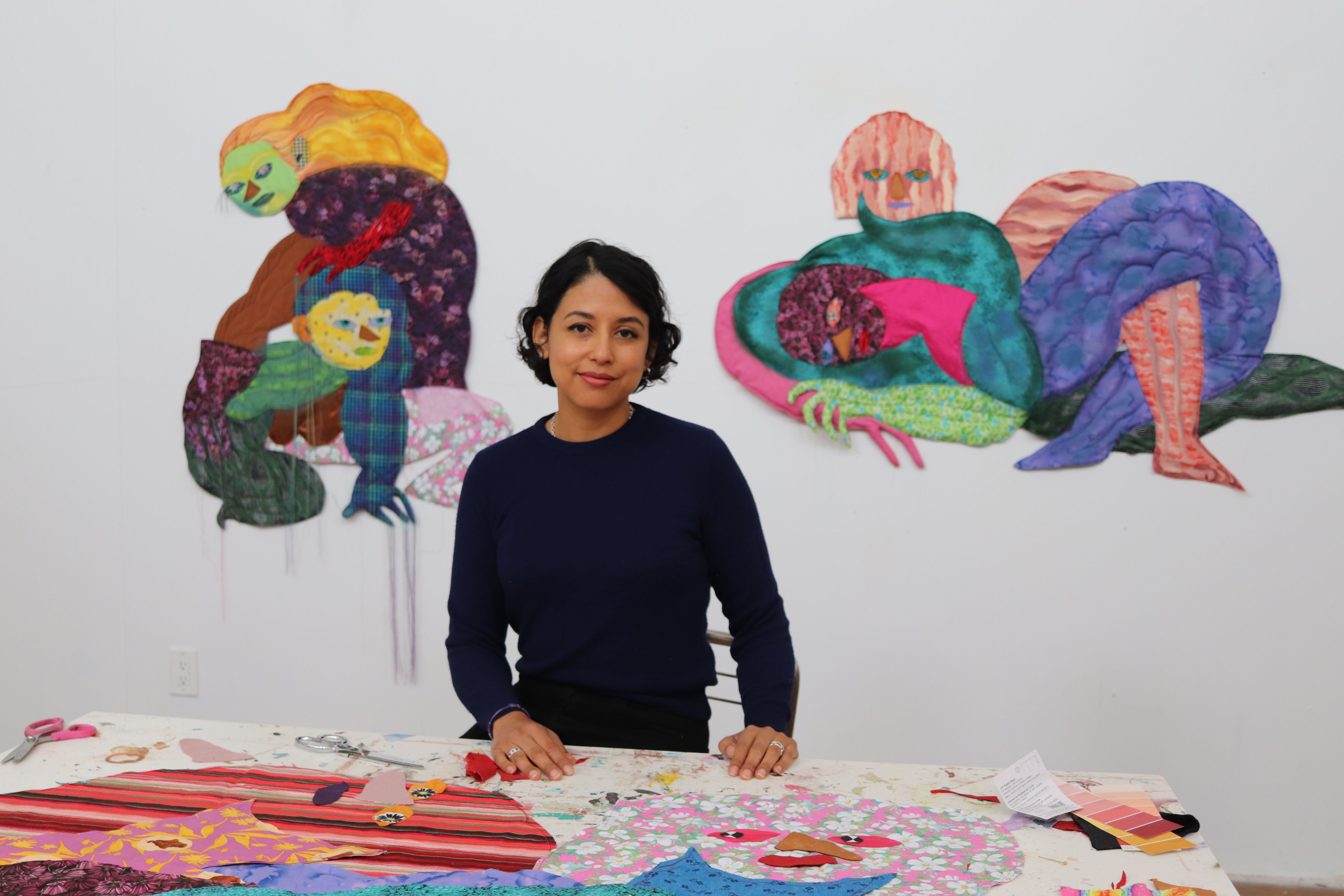UH SCHOOL OF ART ALUM RETURNS TO HOUSTON FOR FIRST SOLO MUSEUM EXHIBITION
Maria A. Guzmán Capron’s “Forma Seductora” is now on display at the Blaffer Art Museum

For Oakland, Calif.-based artist Maria A. Guzmán Capron, returning to the University of Houston—where she graduated with a bachelor’s of fine arts in 2004—for her first museum solo exhibition represents the culmination of years of work.
“In many ways, the University of Houston is where my work started,” said Capron. “It was there that I first started using fabric, even though I was in the painting department. Being back in spaces in which I spent many hours, but haven’t seen in years, allows me to remember that person that I was and see how I am connected to her through my work.”
Capron’s “Forma Seductora” is currently on display at the Blaffer Art Museum through Sept. 18. The exhibition explores “converging forms of identity, culture, desire, and social exchange.” “Forma Seductora” encompases a series of hybrid figures, composed of materials stitched together to “fashion sinuous bodies in various states of motion and repose.”

The figures—described by Capron as “beyond-human characters”—are frequently created using recycled or repurposed materials, something Capron said is conceptual as much as it is practical.
“I source my fabric from different places. Some textiles come from reuse stores, some from fabric outlets and retail stores, others are gifted from people cleaning up their scrap piles at home or studio,” said Capron.


“Having a large variety of fabrics allows me to put together and curate my own aesthetic, one that reflects an immigrant identity that doesn't come from a specific place, but instead from a desire to create a new place.”
Capron’s work is heavily influenced by her experiences as an immigrant, as well as the experiences of the larger Latinx community. Born in Italy to Peruvian and Colombian parents, Capron relocated to Texas as a teenager. She said “Forma Seductora” represents an extension of her efforts to forge a unique identity—one that reflects her heritage, but is not completely defined by it.
“A central thesis for this exhibition is a wish for the audience to find the possibility of new ways of being,” said Capron. “Much of my work is driven by my own desire to expand what is possible in my own life and to share a vision for this with others.”
Capron said her time at UH had a significant impact on her artistic approach.
“I think UH is where I first learned that there was no right way of doing things. Even when I used to paint, there was a push to figure out how I would paint, not what was the right way to paint,” said Capron.
“It was this first idea that allowed me to start cutting pieces of cardboard, plywood, and foam to paint and glue fabric on them. I learned to make my own making process and that this process can keep changing and evolving.”
Capron said that both change and evolution are not only fundamental to her work, but to her creative process as well.
“It is important to me to keep making the work that I am excited to make, and to avoid the feeling that I’m making work that follows some prescribed formula out of some sort of obligation,” said Capron. “Varying the format and allowing myself to pursue these different directions is part of embracing the deeply rooted feelings that underpin all of the work.”
“In the end, the process has to feel right, but come with an openness to the fact that the end result might not.”





Torre dos Clérigos. The most iconic and visible of Porto's many Baroque buildings.
Torre dos Clérigos. The most iconic and visible of Porto's many Baroque buildings.

Ponte Luiz I. A cast iron bridge in the middle of Porto's old town. Look familiar? It was designed by a disciple of Gustave Eiffel.
Ponte Luiz I. A cast iron bridge in the middle of Porto's old town. Look familiar? It was designed by a disciple of Gustave Eiffel.
